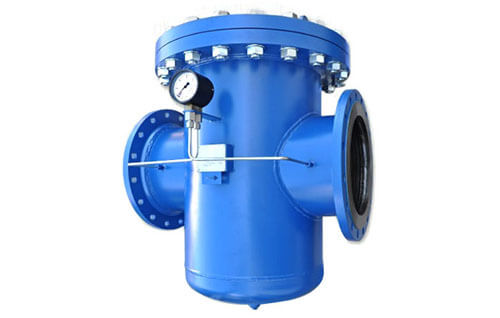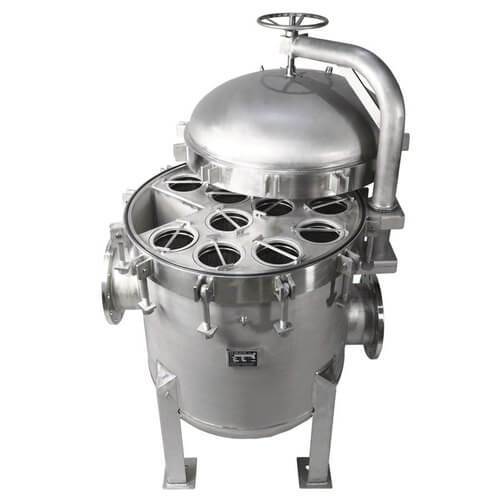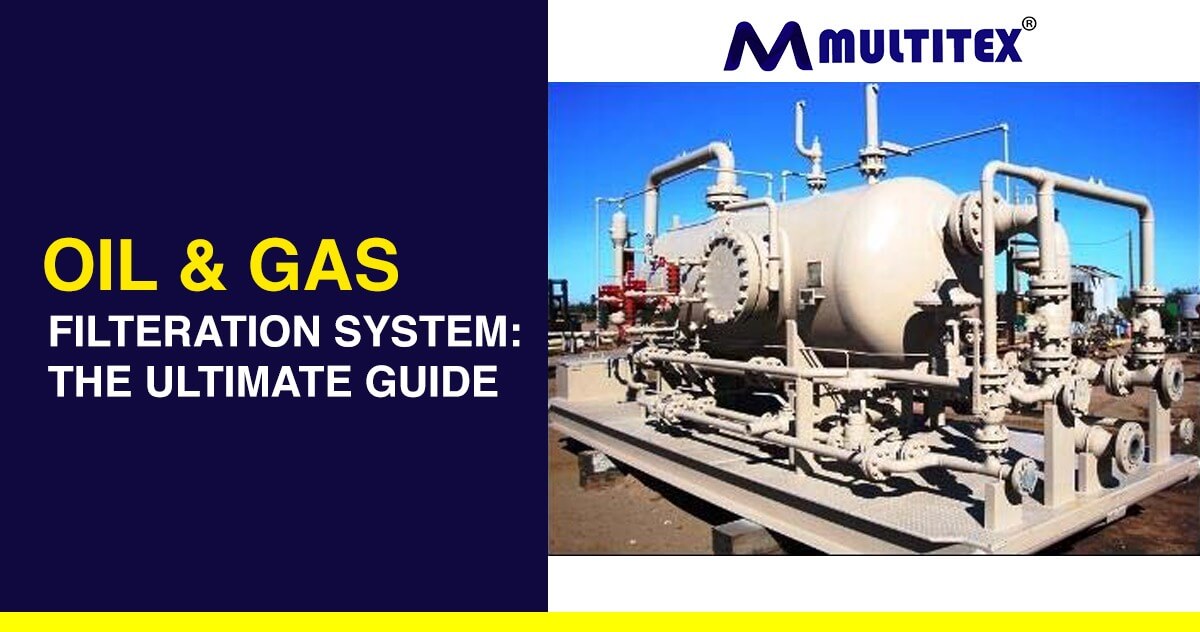Introduction
An oil and gas filtration system is one of the basic setups in any production unit. These are used to remove different kinds of impurities, starting from oil lubrication, fuel gas, gas feeds, and fuel oil inlets. Contaminants are very normal in such oil and gas inputs. However, apart from bringing down the quality of the final output, these contaminants can damage the generators, engines, turbines, and pumps with time.
To protect such expensive equipment and maintain the quality of the process, you may have to install one or multiple oil and gas filtration units throughout your process unit or plant. These filters can also separate oil and gas when there is such a specific requirement.
Stages in Oil and Gas Filtration Process
There are three stages where these oil and gas filtration processes may have to be used.
- Upper-process filtration
- Mid-process filtration
- End-process filtration
Here is how you can differentiate these stages.
| Upper Process filtration | Mid-process filtration | End-process filtration |
| This filtration process happens in the place natural gas fields or oil wells are present. | This filtration process happens when the oil or gas is processed, stored, or transported. | This filtration process happens when the oil or gas is utilized or distributed. |
| Intensive oil and gas filtration steps are needed to convert the natural sources into usable oil or gas. | The filtration process will depend on how the raw material needs to be used in the subsequent steps. Therefore, multiple filters may be required. | The end-process filtration will usually be the end user’s responsibility to use the oil or filter for their own use or distribute them to other residential or commercial establishments. |
What Are Filter Media And What Do These Do?
A filter media is one of the most essential parts of any oil and gas filtration system. This is the part that does the actual filtration process. Most times, the filter media has multiple porous layers. When the oil or gas passes through the medium, the porous components absorb dirt and other contaminants.
There are four different ways that a filter media functions.
- Gravitational effect – The filter media uses a simple gravitational influence, and the larger particles get accumulated at the bottom of the tank, from where they are flushed out later.
- Direction absorption – The porosity of the filter helps block contaminants within itself.
- Inertia effect – Once the filter absorbs the contaminants, they experience inertia, and they stay back, letting the pure oil or gas flow to the next stage.
- Adsorption – The molecular attraction or electrostatic attraction between particles and the filter media helps retain contaminants.
When it comes to the types of filter media, there are a lot of choices. Your manufacturer may be able to choose the correct media depending on the components that need to be filtered, the type of contaminants that may occur, and the extent of purity needed. The below are some of the commonly used media materials.
| Cellulose – Made of wood pulp and fibers and have inconsistent pore sizes to absorb contaminants of different sizes at the same time. |
| Composite – Consists of randomly oriented fibers and a mix of stiffening agents so the media can be pleated. The pleated shape helps hold back more contaminants. |
| Fiberglass – Fiberglass is manmade glass that comes with similar sized and consistent pores. |
Where All Are Oil And Gas Filtration Units Used?
There are so many processes that may need to use oil and gas filtration processes. Some of the common application areas are:
- Land-based oil drilling
- Offshore drilling
- Oil transportation processes
- Oil refining plants
- Petrochemical plants
- Natural gas production and distribution centers
- Gas sweetening processes
- Dewatering and filtration processes
- Glycol dehydration
- Nitrogen generation plants
- Biogas plants
These are just a few of the hundreds of areas where you may need to use oil and gas filters.
Types of Oil and Gas Filtration Systems
There are so many different types of oil and gas filtration systems in use throughout the world. Here is a list of some of the popular types you should know of.

- Simplex filters
These are the most basic filters with a compact design and a simple filtration process. The outer chamber consists of a filter media, and gas or oil flows through an inlet. The contaminants are either absorbed or deposited at the bottom of the tank. Then, the remaining liquid or gas flows out through the outlet.
If there is a problem with the filter, the entire process needs to be shut down while the filter is under maintenance, and this is a significant disadvantage.
- Duplex filters
The duplex filters are another of the commonly used types in many oil and gas filtration systems. These work very similarly to simplex filters, except that these have two separate strainer housing units instead of one. As a result, if one of the strainer units gets clogged or develops a problem, the liquid or gas can quickly be redirected to the other unit, and the problematic one can be worked on. If you have a production process that cannot be stalled and needs to run 24 hours, then duplex filters are a better choice.
- Coalescer filters
A coalescing filter is a unit that works based on the principle of coalescence. What is coalescence, you may ask? This is the process by which smaller fluid molecules combine to become one larger particle. Such filters are used in separating homogenous and heterogeneous emulsions and mixtures using the principle of coalescence.
Now, there are different types of coalescer filters available – gas coalescer, oil coalescer, fuel coalescer, and liquid coalescer. With these filters, you can easily separate water and oil, water and gas, oil and gas, and fuel and gas.
This is definitely one of the more popular oil and gas filtration systems. If you want to read more about coalescence filters, check out our blog on it.
- Single bag filters

Single bag filters are also called single bag basket housings. These are often used for smaller applications that need to collect solid contaminants, and the inflow rate is quite slow. These filters are very economical and that’s a definite advantage.
- Multi bag filters
Multi bag filters are used for applications with a higher flow rate and multiple contaminants. Because they have multiple filtration bags, such units need fewer bag changes and go through lesser maintenance breaks.
Most of these multi bag filters use anywhere from 2 to 12 bags, and most times, these bags can be reused. It is also easy to clean the bags in-house. When the flow rate is more than 250 GPM, manufacturers usually advise using multi bag filters.
- Vacuum Dehydrators
Vacuum dehydrators are oil and gas filtration systems used to remove water contaminants from oil or gas inputs. Such dehydrators are able to remove up to 90% of dissolved water using vacuum technology.
The process is simple. It heats the oil to a specific degree, and the vacuum is drawn, leading to the excretion of water particles.
Parts Of A Regular Oil And Gas Filtration System
Any regular oil and gas filtration system may have the below components.
- Outer Casing – The outer casing helps hold all the parts together. These come in different materials. Stainless steel is the common choice to avoid rusting.
- Condition indicator – This keeps measuring the differential pressure within the filter chamber. Abnormal differential pressure may mean there is a problem with the filter and it may need to be cleaned or repaired.
- Filter head inflow and outflow pipes – This is the place from which oil or gas flows inside the filter, gets filtered out, and then flows out to the next chamber or for further processing or storage.
- Filter media – This is the main heart of the filter. The size and materials used in the filter media depend on what needs to be filtered, the inflow rate, and the purity required.
- Baseplate – The base plate is the supporting structure for the filter media. This will prevent leakages and backflows and maintain the correct differential pressure.
- Drain port – In case contaminants or the base liquid or gas needs to be drained at different intervals, there will be drain ports in specific locations within the filter housing.
- Bypass valve – A bypass valve helps bypass the liquid from one chamber to another or one bag to another whenever needed. This is an integral part of large oil and gas filtration systems.
Conclusion
An oil and gas filtration system is a costly piece of equipment for any production plant or operational facility. When your production process works 24X7 and filtration is a vital part of it, you may need to invest in outstanding products from manufacturers who promise to use quality materials and offer quick maintenance service.
Make sure you check with the manufacturer about maintaining the filter and invest in maintenance activities once in a while to improve the filter’s lifespan. When you invest, always choose quality and reliability over the one-time discounts you may get.
We at Multitex understand the importance of a sound oil and gas filtration system for your unit, and that is why we offer customized solutions that fit you perfectly. Our oil and gas filters are equipped to filter out a wide range of contaminants like dirt, dust, fumes, rust, condensate, and water of the most petite micron sizes.
Our experts work hand-in-hand with the clients, understanding their requirements and ensuring the final product exceeds expectations.
Multitex delivers innovative and niche solutions consistently for almost five decades with in-house Engineering and Manufacturing facilities that are certified and accredited by International organizations. It also ensures its people are adequately trained by experts, both on-field and classroom environment so that all safety measures and care is taken to ensure smooth operation throughout.
Do you have any queries regarding oil and gas filters? Feel free to get in touch with Multitex Contact, and we will love to set up a consultation session that benefits you.
